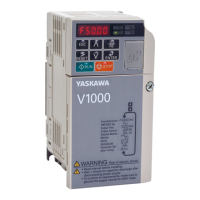2.8.23.5 Operation Commands (Cent’d)
(5) Combinations of Operations
The above operations and functions may be used
in combinations.
A functional operation is per-
formed first.
Then, a multiply-type operation is
performed. An add-type operation is performed
last.
S ample
#i= #j+
‘k * SIN [#L]
Y
~
@
IJ2._J
(6) Change of Operational Order by [ ]
Priority may be given to an operation by enclos-
ing it in brackets [ ] . Up to quintuple (five-
hold) nesting of brackets is permitted including
those of functional operations.
Sample
I
I
] h]
*
u
I
(7) Considerations for Operational Commands
a. The constant without decimal point used in
<expression > is assumed to have a decimal point
at its end.
b.
When used in conditional Expression IF or
WHILE, function ROUND truncates the fractions.
c. When used in address data, function ROUND
rounds off the part below the least significant
digit.
Sample (a)
#10 =
12.3758
When the least significant digit of address
X is O.001 mm, the following command
Goo x [ROUND [ #lo]];
means
GOO x12.376 ;
because 8 of 12.3758 is rounded.
This command is also equivalent to
GOO X#10 ;
Usually, ROUND is not used as mentioned above;
it is used as shown below :
Sample (b)
When ROUND is used as follows, the program re-
turns to the start point correctly:
@ #10 = 12.3758 ;
@ #11 = 13.1236 ;
‘:;;;a
@ G()’O U#10 ;
@ GO1 U#l~ F.. . ;
— +x
@ GOO
U- [ROUND [#10] + ROUND [#lI]] ;
This is because the data of #10 and #11 in @
and @ blocks are substantially rounded before
being executed.
If @ block is
@ GOO U- [#10 +#11] ;
then, the movement is made by the following
amount:
U- [#10 + #H] = U - [12.3758 + 13.1236]
= U - [25.49@
—
- U - [25. 499]
On the other hand, block movement of
~+@is
rJ#10 + U#ll = U12. 376 + U13. 124
= U25. 500
Hence, the program of @ is not correct.
(8) Operational Errors
The data format and the operational errors in the
macro programs are as follows:
a. Data Format
The numeric data handled in macro programs are
of the floating point format.
m
where, M is sign + data 52–bit binary,
E is sign + data 10-bit binary.
b. Operational Errors
Each time an operation is performed, the follow-
ing error is caused and is accumulated. The num-
ber of significant digits is 15 to 16, which com-
pensates the error sufficiently.
80

